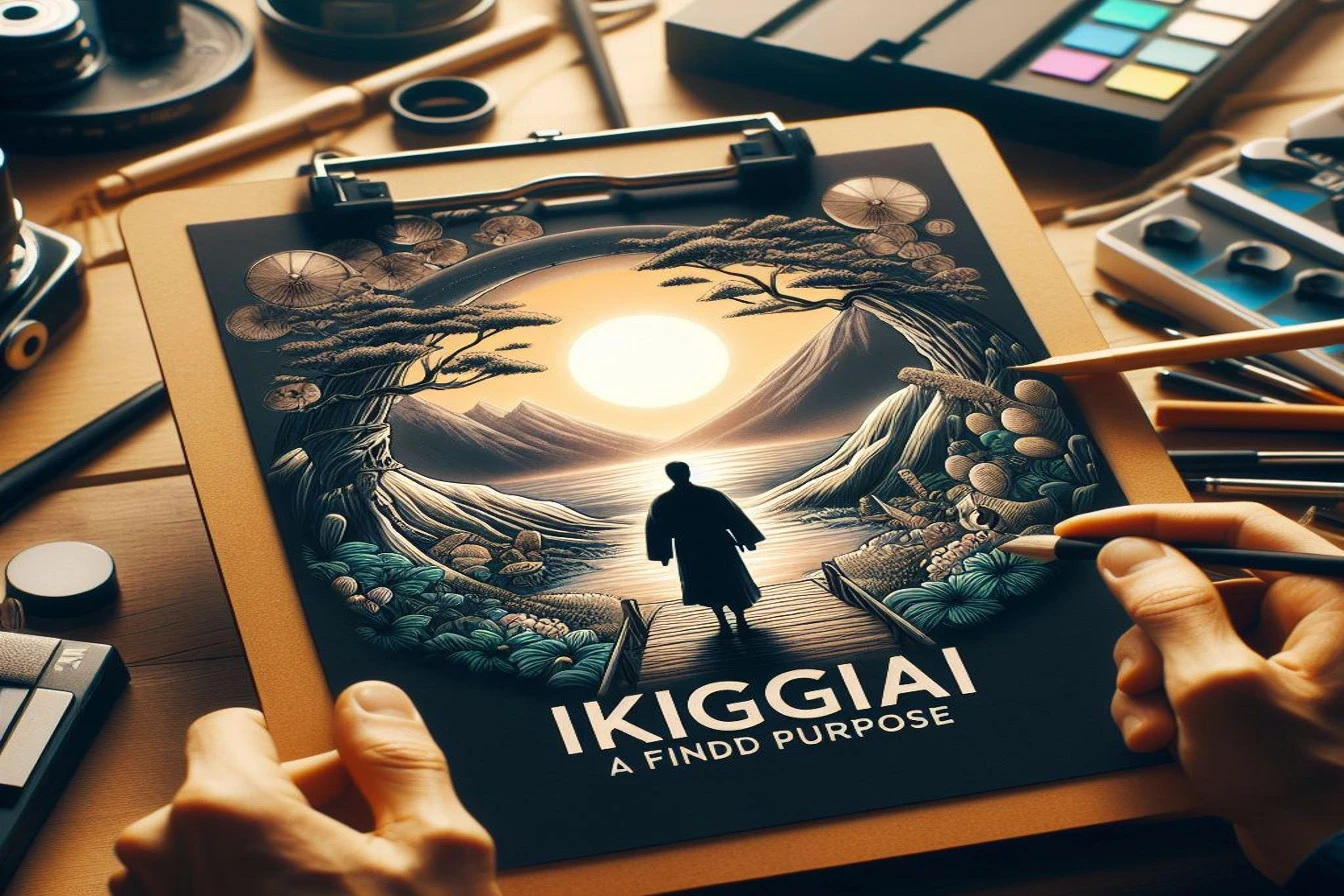
Imagine waking up each morning filled with passion and drive for the day ahead. You have clarity on how to spend your precious time and your goals feel aligned with your inner compass. Now contrast this with feeling stuck in monotonous routines that seem disconnected from what truly matters to you.
Most of us have experienced both ends of this spectrum at some point. In our fast-paced modern world, it’s easy to lose sight of the things that light us up inside. We fall into inertia and even passions can seem dulled by routine.
The Japanese culture has a powerful antidote to this meaning-drain. It’s called Ikigai (pronounced “ee-key-guy”) – which translates to “reason for being.” This profound concept provides a pathway to discovering your life purpose and infusing the everyday with joy and significance.
In this article, we’ll explore:
- What is Ikigai and how it evolved in Japanese culture
- A step-by-step process to uncover your unique Ikigai
- Leveraging Ikigai to overcome laziness and stagnation
- Integrating your life purpose into daily routines
- Navigating common challenges in living your Ikigai
Let’s begin this transformative journey.
Origin Story: Unearthing the Roots of Ikigai
Ikigai has its origins in the long-lived elders of Ogimi Village in Okinawa, Japan. Often referred to as the village of longevity, Ogimi is home to some of the world’s oldest and healthiest people. The traditional ikigai culture is one reason behind this village’s extraordinary life expectancy.
So how did the concept of this life purpose philosophy evolve?
Ikigai combines two Japanese words:
- Iki: Life
- Gai: Value, worth
Together, Ikigai roughly translates to “reason for being” or the “joy and purpose we feel in carrying out our life’s work.”
But it goes deeper than surface happiness. Ikigai balances realistic restraint with aspirational vision to find your sweet-spot. This is the convergence zone where your skills and joy match societal needs and livelihood potential.
Ikigai provides a continuous guiding star – a North Star representing this convergence that illuminates your path, even when clouds or storms try to throw you off course. Finding your Ikigai is considered in Japanese culture as the master key to a long and purposeful life.
Now that we have unearthed the meaning behind this centuries-old concept, let’s explore how to apply it to uncover your own unique life purpose.
Discovering Your Ikigai: A Practical Step-by-Step Process
Think of discovering your Ikigai as an excavation towards unearthing your inner truth. An exploration into what really ignites your passion and aligns with your innate talents. This process reveals your authentic self by peeling away conditioned societal expectations.
Ready to grab your shovel and dig?
Here is a practical framework you can apply:
Step 1: Brainstorm Your Passions
Start by reflecting deeply on times when you lose sense of time and external pressures. When you are so engrossed internally that hours fly by immersed in the creative flow.
- What specific activities bring you this sense of joy and contentment?
- What are you naturally drawn to explore without external reward or recognition?
- Consider hobbies, intellectual pursuits, artistic endeavors etc.
Example: painting, writing poetry, solving coding challenges
Step 2: Identify Your Innate Abilities
Now shift your focus inwards. What talents and skills come most naturally to you?
- What feedback have you received about your strengths?
- When have others approached you for help in specific areas?
- What achievements fill you with deep pride and sense of competence?
Example: communicating complex topics clearly, visual design flair, empathic listening ability
Step 3: Evaluate Societal Needs
The next lens we apply exposes gaps between your innate talents and skills to pressing external needs.
- What issues do you see around you that spark a desire to find solutions? In your community/nation/the world?
- Do any social causes resonate with you enough that you spontaneously volunteer to support them?
- What are some recurring problems you hear people around you complaining about?
Example: access to mental health support, sustainable environmental policies, homelessness
Step 4: Assess Livelihood Potential
This final filter adds some constraint around practical considerations of earning a livelihood.
- Which of your passions and skills can translate into reasonable income potential?
- Would you be willing to supplement a passionate career with some unexciting freelance work to pay bills?
- How might you need to expand your skills to increase income-potential?
Example: turning photography talent into wedding/event services, translating empathic ability into life coaching business.
Step 5: Find The Convergence Sweet Spot
Now comes the exciting part – finding intersections between these 4 key areas. Start by visually mapping your brainstormed ideas into a large Venn diagram. This will reveal some initial areas of overlap. Not all circles need to intersect equally.
Your passion for music may only tangentially tie to environmental policy efforts. This unevenness is normal as you explore potential convergence zones. Guiding questions when analyzing overlapping zones:
- Does this area excite me enough that I would thrive doing it regardless of pay?
- Will this remain compelling even on difficult days when motivation fluctuates?
- Is there long-term income potential or supplement options if needed?
Example Sweet Spot #1:
- Passion: Writing & Storytelling
- Skill: Communications & research
- Need: Demystifying complex health topics
- Livelihood: Medical content writing services
Example Sweet Spot #2:
- Passion: Photography & nature appreciation
- Skill: Visual media design
- Need: Public awareness content for sustainability advocacy groups
- Livelihood: Contracts with environmental NGOs
Remember, this Venn convergence is not a fixed destination but rather your North Star. As life ebbs and flows, your passions, capacities and external realities will shift. Your Ikigai integration sweet spot is a moving target that evolves as you grow.
What remains constant is your commitment to regularly rediscovering this harmonic convergence zone – much like sailors would recalibrate their orientation using the stable North Star. Now that you have a framework to uncover your purpose, let’s move to applying it as your guiding light.
Harnessing the Power of Ikigai to Overcome Laziness and Cultivate Motivation
Finding your Ikigai provides a solid foundation and North Star for your life journey. But this first step is incomplete without the second pillar – taking action. After all, what good is an illuminated purpose if we feel too unmotivated to pursue it? This is where the process of living your Ikigai transforms stagnation into vibrancy.
So how specifically can discovering then actively engaging with your life purpose help overcome laziness?
There are two key mechanisms:
1. Lighting up Internal Motivation
A fundamental driver of procrastination is lack of motivation. With a clear Ikigai, you have tapped into profound intrinsic rewards. Your goals are tied to a deeper calling and everything you do has heightened meaning. This ignites motivation organically from within, rather than requiring willpower against external “shoulds”.
2. Reframing Daily Tasks as Steps Along a Hero’s Journey
Living your purpose casts ordinary stresses as challenges along a heroic life quest. Each small effort contributes to advancing towards a greater vision. With this paradigm, you shift away from resisting tedious tasks. Instead, your energy flows enthusiastically towards playing your part in a captivating grand adventure.
Let’s get more tactical with tips on setting Ikigai-aligned goals and redesigning routines.
Crafting Inspiring Goals
Aligning goals to your purpose ensures they advance you towards fulfilling that higher vision. Here’s how to craft purposeful goals:
- Set specific medium or big picture goals so efforts clearly connect to a larger advancement.
- Balance idealism with pragmatism based on current life constraints to avoid frustration from unrealistic expectations.
- Maintaining a mix of shorter milestones and longer time-range goals keeps motivation steady.
- Build in periodic check-ins to re-calibrate goals as life evolves to sustain relevance.
Weaving Passion Into Routines
Beyond transformational vision, Monumental life changes happen gradually through small repeated actions. Here are some ideas for innovating daily habits:
- Dedicate non-negotiable time for your ikigai activities amidst busy schedules.
- Treat skill-building practices as essential appointments, not optional extras.
- Document your journey to appreciate progress made; ctrlebrate milestones.
- Make lifestyle choices that sustain energy for passion projects.
Redesigned routines and purpose-centered goals reinforce each other in a virtuous upwards spiral – dissolving the vine-like chokehold of laziness.
Navigating Challenges: Turning Stumbling Blocks Into Stepping Stones
No quest is without obstacles and misadventures. Changing deeply ingrained habits requires lifelong commitment through ups and downs.
Here are some common pitfalls those pursuing their Ikigai face:
1. Cultural Conditioning
Old belief systems about what “responsible” adulthood looks like may create self-doubt and anxiety when you diverge from societal norms. Journal to process these emotions without reacting by abandoning your vision prematurely.
2. Perfectionism Paralysis
Fear that you lack skills or experience to properly live your purpose may prevent getting started. Battle this by taking imperfect beginner steps, knowing expertise emerges later through sustained practice.
3. Resource Constraints
Limited energy divided across work, relationships and other obligations may leave minimal time left to dedicate towards exploring passions. Evaluate tradeoffs mindfully to free up resources aligned with priorities.
4. Comparing to Others
Seeing peers progress faster may tempt you to alter your goals to match external standards versus internal truths. Redirect focus back to your own North Star markers of success.
5. Loss of Momentum
The initial excitement around purpose-aligned changes eventually plateaus back to stable routines. Preserve momentum with small rhythmic actions that accumulate, like droplets forming a steady stream. Each challenge along the journey teaches resilience to course-correct towards your North Star. With commitment to the process, the path itself transforms you as you walk it.
Shortcuts may expedite the destination, but living your Ikigai is about relishing each step – no matter how meandering.
Sustaining Passion By Living Your Purpose
We’ve mapped out how to discover your ikigai and harness it to cultivate motivation to defeat laziness. But there is one crucial component still remaining. The real magic happens when this discovery process shifts from a one-time intellectual reflection to an embodied living philosophy.
True transformation requires translating your North Star from abstract knowledge into concrete beliefs, daily behaviors and habitual thought patterns.
Here are some ideas on sustainable ways to keep purpose infiltrating life:
Set Aligned Personal Goals
Choose specific development goals resonant with distinct aspects of your Ikigai like creativity, contribution to causes or community building.
Design Supportive Environments
Craft physical spaces and digital systems that facilitate skills integral to your purpose like writing nooks, art studios or offline freedoms.
Curate Inspiring Content
Follow creators who encourage you & regularly revisit books/videos/songs kindling your spark so it remains a roaring flame lighting up daily choices.
Practice Supportive Self-talk
Cultivate mental patterns reinforcing actions aligned with what you want more of rather than criticism dragging you into sucking spirals.
Document and Celebrate Milestones
Recording progress through journaling, photography or videos lets you appreciate the fruits of small consistent efforts over decades that ultimately transform realities.
Stay Open and Nimble
Revisit your North Star periodically as life circumstances change, to adjust trajectories aligned with your evolving identity rather than rigidly clinging to past versions of purpose. Weaving passion into the fabrics of daily life sustains the commitment needed to stick with your Ikigai for the long haul.
Purposeful creation comes from balancing inspiration with perspiration. With dedicated rhythm, small purposeful actions accumulate into monumental manifestations over the years.
Conclusion: First Steps Along the Never-Ending Journey
Living out your Ikigai is a continuous lifelong adventure. It offers a blueprint for discovering your inner truths and orienting everyday choices around that wisdom. But remember, your Ikigai is not a fixed destination or an external source of solutions.
Ultimately, it is a compass directing you inward. A mirror reflecting back clues to unlock your latent potential. A framework revealing where you already shine, so you can gleam brighter.
I hope this guide provided some sparks of inspiration as you craft your unique path. Begin now by asking yourself:
- What small step can I take today, however imperfectly, as a first stride toward my North Star?
- How will I sustain motivation when I inevitably stumble or lose sight of my way?
- Who can I connect with to nourish me along this winding journey?







